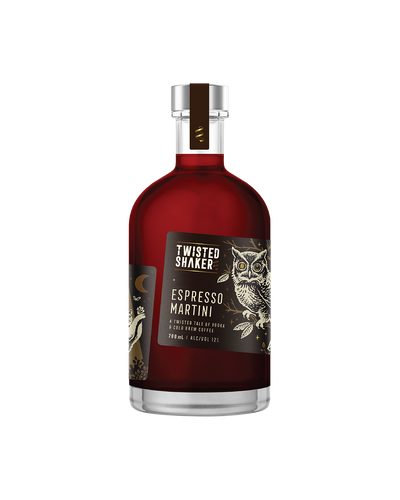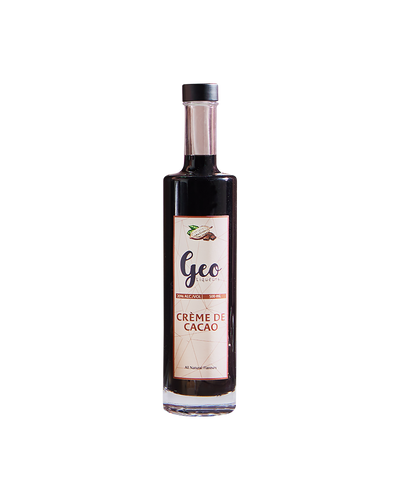Your Complete Guide To Liqueurs - Coffee, Triple Sec & Blue Curacao
Liqueurs are a staple at any bar you’ll visit — they’re an essential cocktail ingredient, and frequently delicious on their own. You may even already have a few set up in your cupboard at home. But exactly what are liqueurs? Unless you’re a longtime fan, it’s something you may not have given a great deal of thought to. But having an understanding of what liqueurs are and how they’re produced can really enhance your appreciation of your next drinking experience. That’s why we’ve created this liqueur guide to help walk you through everything you need to know about these delicious alcoholic beverages.
Liqueurs — what are they?
Broadly, a liqueur is an alcoholic drink that’s created with a mix of distilled spirits and other flavourings. These might come from fruits, sugars, herbs or spices, or a blend of any of those ingredients. While their exact origins are obscure, they’re known to date to at least 13th-century Italy and can probably trace their origins further back to certain traditional herbal medicines. However, in modern times they’re less renowned for their medicinal qualities and more admired for the flavours they can add to mixed drinks. Today, liqueurs are a staple of the liquor scene. They serve as an essential component in many cocktails, helping add both an extra touch of flavour and colour in the process.
This somewhat cavalier attitude to production in the early days of liqueurs has naturally led to a wide variety of different types of liqueur — though a few popular styles tend to dominate, like coffee liqueur, triple sec and blue curacao, there are an almost infinite number available. New liqueurs are being developed, too, as people tinker with existing ingredients or introduce entirely new ones. If there’s a flavour of liqueur that you can imagine, the odds are strong that someone has at least taken a stab at producing it.
However, the various types of liqueurs do share a few features in common. As a rule, they tend to be much sweeter than the spirits that are used to produce them. This has made them popular ingredients in mixed drinks and as beverages in their own right, particularly for people who are starting to discover drinks for the first time. There are exceptions, of course; triple sec, for example, is rarely consumed on its own today. It’s typically seen as more of an accompaniment to a cocktail, due to some of its bitter undercurrents.
Additionally, liqueurs such as coffee, triple sec and blue curacao are mainly produced via distillation. It’s not a dissimilar process to gin or flavoured vodka, with the ingredients placed in a spirit and then left to soak for a period before being distilled. The final product tends to be lower in alcohol, though — the average alcohol percentage in liqueurs tends to be around 20%, which is notably stronger than beer or wine, while still being significantly lower than the average spirit.
And it’s no coincidence that liqueurs are also often produced by gin or whisky distilleries, as they already have the equipment ready to go. Given their comparatively short production time — particularly in contrast to whisky — they’re an ideal way for businesses to keep operations running in between new batches of gin or whisky being released.
How to drink liqueurs
One of the great aspects of drinking liqueur is the sheer versatility on offer. While most can be simply enjoyed neat or by drinking them on the rocks, once you introduce cocktails into the mix it becomes a substantially spicier proposition. For this liqueur guide, we’ve opted to focus on three key liqueurs available on the market today — coffee liqueur, triple sec and blue curacao.
Coffee Liqueur
Rich, sweet and sugary, with just the slightest traces of coffee’s usual bitterness lying beneath, coffee liqueur is a remarkably popular beverage. It’s frequently enjoyed on its own, on the rocks, in a glass of milk or as a cheeky addendum to a coffee. It’s not uncommon to see it used in settings such as an ice cream topping or as a component in cake icing, either, which is a testament to its versatility.
However, most modern drinkers are likely to be familiar with coffee liqueur via the espresso martini — a classic cocktail that has seen a resurgence in popularity over recent years.
Recipe: Espresso Martini
- Ice cubes
- Shot (40mL) of vodka
- Half a shot (20mL) of ml Geo Coffee Liqueur
- Half a shot (20mL) shot of ml espresso
- 3 coffee beans
Fill your cocktail shaker with ice cubes, and add all of the ingredients, save the coffee beans. Give it a good shake, and then pour with a strainer into a margarita glass. Last, but not least, garnish the drink with coffee beans.
Triple Sec
A distilled drink made from orange peels and a neutral spirit, triple sec has long been famed for its ability to add a delightful blend of citrus twist and bitterness into just about any drink. A member of the curacao family of drinks, it’s a little more bitter than many of its orange liqueur cousins — but it’s an excellent ingredient to add some flair into a sweet cocktail, giving it an extra edge in the process.
Recipe: Cosmopolitan
- 1 ½ shots (60mL) of vodka
- 1 shot (40mL) of triple sec
- ½ a shot (20mL) of cranberry juice
- ½ a shot (20mL) of lime juice
Fill your cocktail shaker with ice cubes, then add all of the ingredients. Shake well, then pour over a strainer into a margarita glass. Garnish with orange or lime peel, as preferred.
Blue Curacao
A delicious, sweet and citrusy liqueur derived from herbs, spices, orange peel and cane sugar spirit, blue curacao is a common fixture among tropical-themed cocktails. Though often noted for its visual flair thanks to its bright blue colour, don’t let that distract you from the fact that it’s a highly versatile citrusy addition to a drink in its own right.
Recipe: The Blue Lagoon
- 1 shot (40mL) vodka
- ½ shot (20mL) blue curacao
- Lemonade
Pour the vodka and blue curacao into a highball glass, then top it up with ice. After this, add lemonade. Stir, serve and then sip away.
Time to try some liqueurs for yourself
Liqueurs are an essential addition to any liquor cabinet — and indeed, many kitchens as well. So if you’re wondering how to store liqueurs, make sure you keep them in a dark and cool environment out of sunlight. This will help prevent oxidation after the bottle is opened and ensure that the flavour is retained down to the last drop.
We hope that you’ve enjoyed discovering more about what liqueurs are and their importance to the modern world of alcoholic drinks through this liqueur guide. So if you’re feeling thirsty, why not sample some liqueurs for yourself?
Coffee Liqueur
What is coffee liqueur?
A dark, viscous, coffee-flavoured liqueur. Generally created from coffee beans, vanilla essence, caramel flavouring and rum. Offers the distinctive flavours of coffee without the attendant bitterness.
Coffee liqueur tasting notes
Hints of caramel and vanilla under a rich, sweet base of coffee, this liqueur is a smooth experience. With the bitterness of ordinary coffee heavily reduced, it’s an excellent introductory drink to coffee for many. However, repeated sips and experimenting with it at different temperatures will help reveal the nuances and additional flavours contained within.
How to drink coffee liqueur
Coffee liqueur can be drunk neat or over ice. It’s also popular as a way to spike coffee or a glass of milk, adding some additional flavour and spice in the process. However, it’s also a key ingredient of coffee-focused cocktails like the Espresso Martini or the Black Russian.
Coffee liqueur average alcohol percentage
20%
Triple Sec
What is triple sec?
An orange-flavoured liqueur made from a neutral spirit (usually derived from beetroot) and orange peels. Originally created as a derivative of curacao, it’s become a distinct style in its own right.
Triple sec tasting notes
Citrusy and dry, with a trace of bitterness underlying the overall sweet flavour.
How to drink triple sec
Rarely drunk on its own, though a small fanbase does enjoy it neat or over ice. Triple sec is best enjoyed as a way to add a hint of citrusy flavour and slight tang to drinks like the Long Island Iced Tea, Mai Tais, Cosmopolitans and Margaritas.
Triple sec average alcohol percentage
20%
Blue Curacao
What is blue curacao?
Crated with herbs, spices, orange peel and cane sugar spirits, curacao has been a favourite since the Dutch colonial era. The blue colour isn't a result of any of the core ingredients; it was likely originally added to give the drink a little more visual flair. Today, it’s a cocktail staple.
Blue curacao tasting notes
Sweet and citrusy. Less of a bitter profile than triple sec, due to the cane sugar liquor used in its production and the greater variety of ingredients included.
How to drink blue curacao
Blue curacao is frequently enjoyed poured into lemonade in a highball glass. This mix is unsurprisingly known as “blue lemonade”. It’s also a key component for both colour and citrus flavour in tropical-themed drinks like the Blue Hawaiian and Sex in the Driveway. Also handy for turning red or pink drinks purple, and adding a little extra hit of sweet citrusy flavour.
Blue curacao average alcohol percentage
20%















Leave a comment